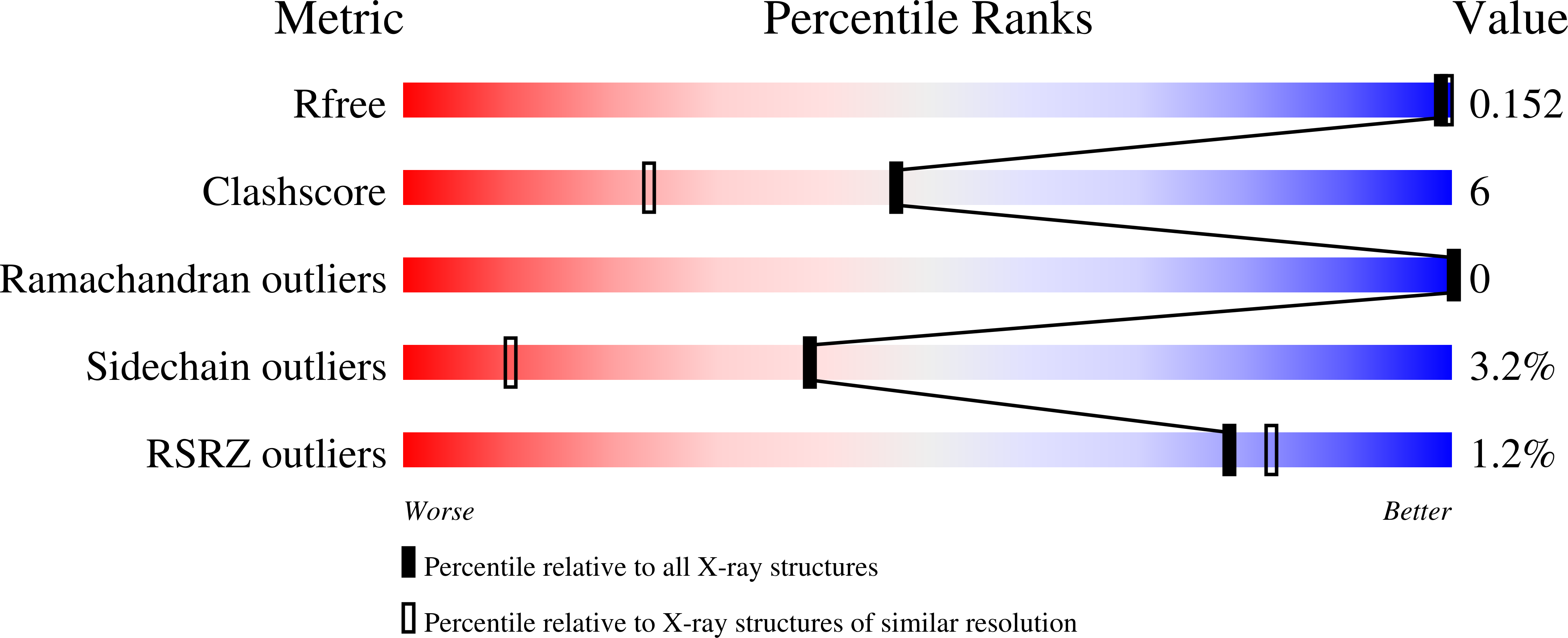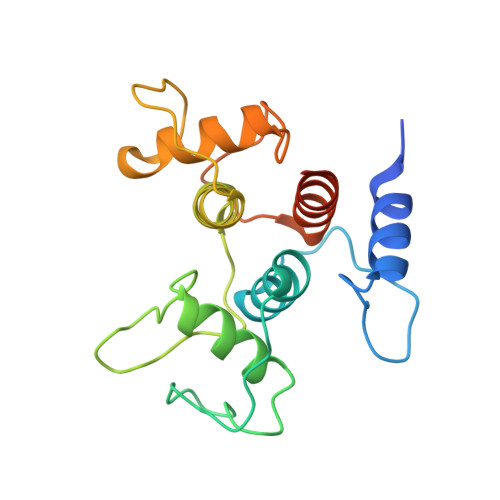Structural basis of cell wall anchoring by SLH domains in Paenibacillus alvei.
Blackler, R.J., Lopez-Guzman, A., Hager, F.F., Janesch, B., Martinz, G., Gagnon, S.M.L., Haji-Ghassemi, O., Kosma, P., Messner, P., Schaffer, C., Evans, S.V.(2018) Nat Commun 9: 3120-3120
- PubMed: 30087354
- DOI: https://doi.org/10.1038/s41467-018-05471-3
- Primary Citation of Related Structures:
6CWC, 6CWF, 6CWH, 6CWI, 6CWL, 6CWM, 6CWN, 6CWR - PubMed Abstract:
Self-assembling protein surface (S-) layers are common cell envelope structures of prokaryotes and have critical roles from structural maintenance to virulence. S-layers of Gram-positive bacteria are often attached through the interaction of S-layer homology (SLH) domain trimers with peptidoglycan-linked secondary cell wall polymers (SCWPs). Here we present an in-depth characterization of this interaction, with co-crystal structures of the three consecutive SLH domains from the Paenibacillus alvei S-layer protein SpaA with defined SCWP ligands. The most highly conserved SLH domain residue SLH-Gly29 is shown to enable a peptide backbone flip essential for SCWP binding in both biophysical and cellular experiments. Furthermore, we find that a significant domain movement mediates binding by two different sites in the SLH domain trimer, which may allow anchoring readjustment to relieve S-layer strain caused by cell growth and division.
Organizational Affiliation:
Department of Biochemistry and Microbiology, University of Victoria, Victoria, BC, V8W 3P6, Canada.
















